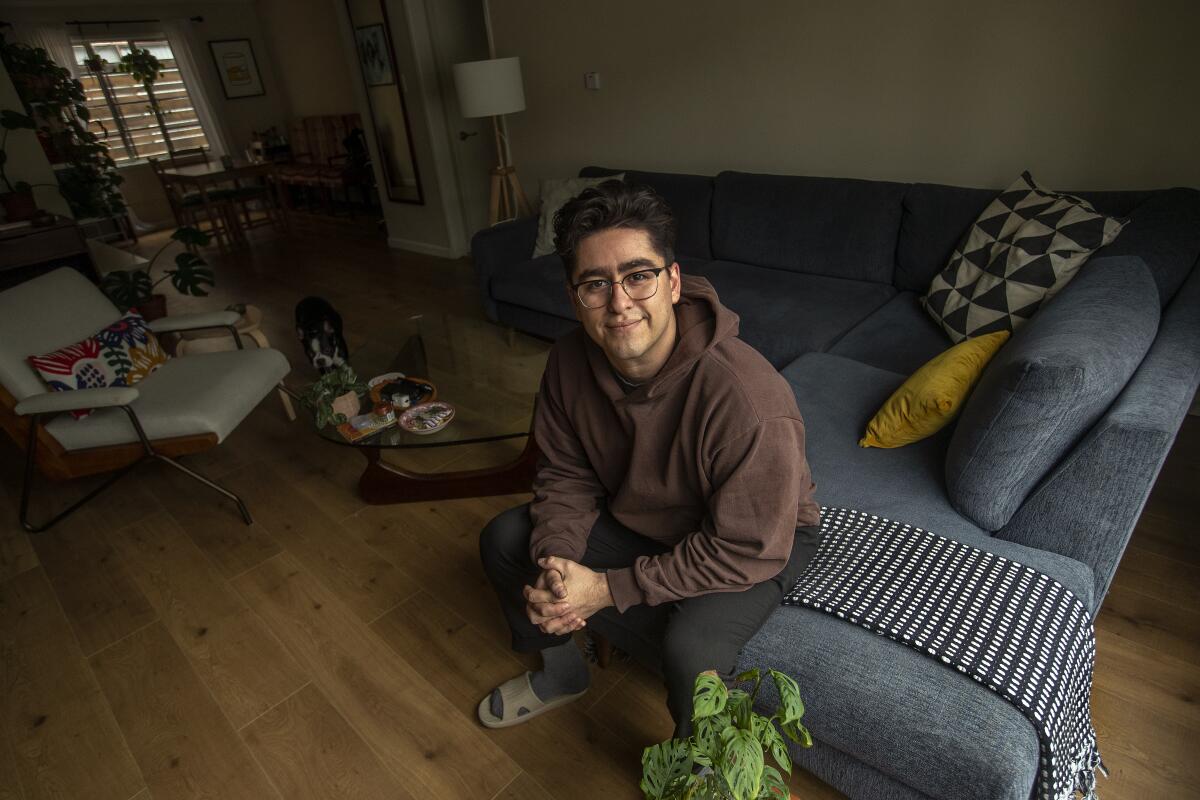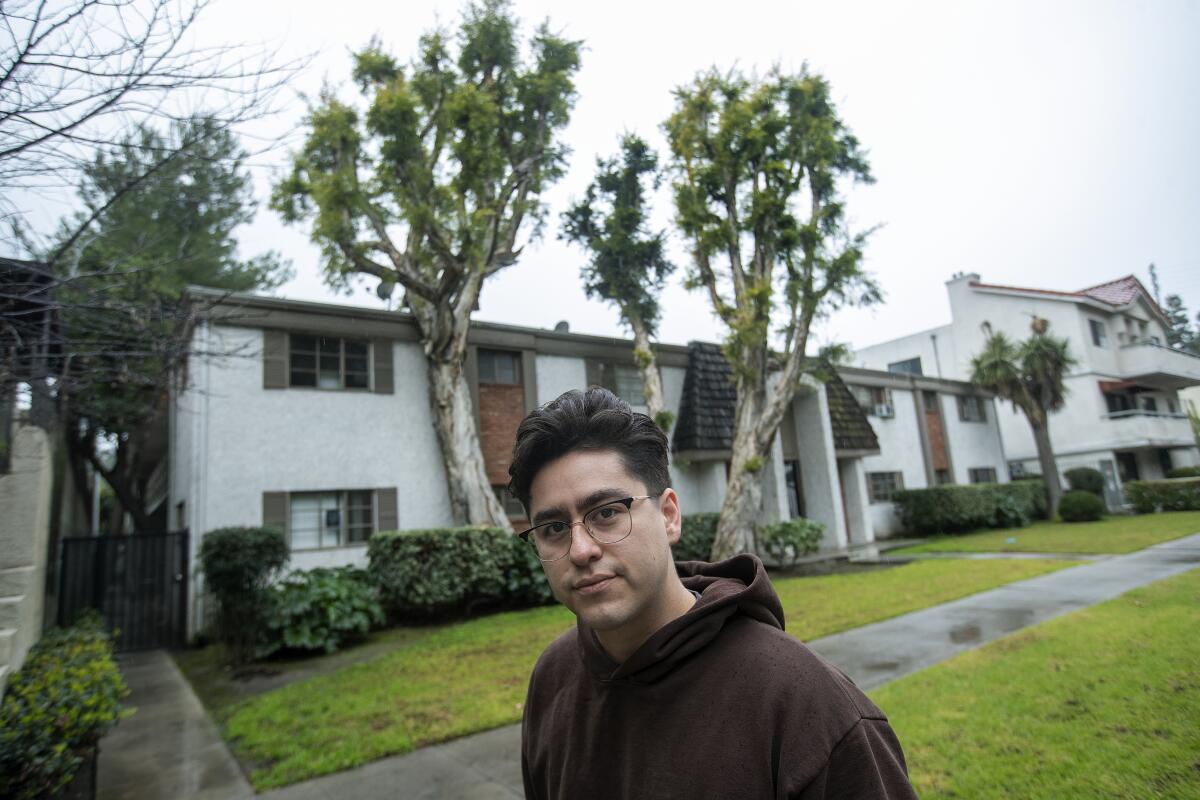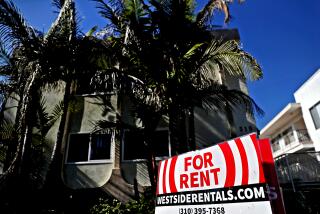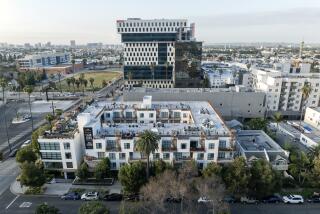Even in a hot market, L.A. won’t allow rent hikes for most tenants until 2023

- Share via
After seven months of a global pandemic spent in a cramped one-bedroom apartment, Jacob Guardado and his roommate decided to make a move.
They found a Studio City two-bedroom in October 2020 for $1,975 a month — a few hundred dollars more than what they had been paying. When the lease ended a year later, Guardado was waiting for his landlord to tell him how much more it was going to cost to stay there.
For the record:
2:35 p.m. Jan. 4, 2022An earlier version of this article misstated that the city of Los Angeles’ rent stabilization ordinance allows rent increases of no more than 3% annually. Landlords are allowed to raise rents on existing tenants between 3% and 8% annually, depending on inflation.
“I didn’t want to ask,” said Guardado, 28, who works in the insurance industry.
But the rent increase never came. And there won’t be one for a while. As the U.S. nears the beginning of the third year combating COVID-19, tenants in L.A. are receiving a benefit few others have: Landlords are prohibited from raising the cost of more than 650,000 rent-stabilized units citywide, which represents nearly three-quarters of L.A.’s apartment stock.
Under the rules, landlords are not allowed to increase rents for an entire year after the expiration of the emergency order signed by Mayor Eric Garcetti in March 2020, when the policy went into effect.
As of now, no rent hikes will be allowed for most L.A. tenants until 2023. And possibly beyond.
What is celebrated by tenants and their advocates is lamented by landlords, who say the freeze puts them in an untenable situation.
“We have to pay a mortgage and pay utilities,” said Ari Chazanas, president of Lotus West Properties, which manages about 1,000 apartments across the city. “I think there’s a lot of fatigue from people like me because it’s been going on for so long.”
Landlords in L.A. say costs have risen sharply, including labor and materials for building repairs as well as city fees for trash pickup.
At the beginning of the pandemic, many local governments added protections against rent increases, but across the country, those measures are going away.
Garcetti said L.A.’s rules should continue, especially with the recent surge in coronavirus cases.

“Angelenos should be focused on staying healthy and staying safe — not whether they can afford their home when they’re hurting financially as a result of this virus,” Garcetti said in a statement to The Times.
Richard Green, director of the USC Lusk Center for Real Estate, said so far it doesn’t appear L.A.’s rent hike ban is dramatically affecting the housing market. But he said he worries that the longer it continues, the less likely it is for upwardly mobile tenants to leave their existing apartments, keeping what would be lower-cost units unavailable for others.
“You need a natural churn to make units available to people,” Green said.
The restrictions are perhaps benefitting tenants more now than at the beginning of the pandemic, when rent prices plummeted in Los Angeles and cities nationwide. L.A. median rent for recently leased apartments have rebounded to $1,947 a month in November, according to the real estate firm Apartment List — up nearly 15% from the low in January and eclipsing pre-pandemic levels.
The city’s rent stabilization rules generally apply only to apartments built before October 1978. Normally, landlords are allowed to raise rents on existing tenants between 3% and 8% annually, depending on inflation.
But the mayor’s emergency order changed that, marking the first time in more than four decades under the city’s current rent control laws that landlords have been blocked from any increases. Landlords remain able to charge whatever they want for apartments once a tenant vacates.
San Francisco blocked landlords from raising prices in rent-controlled apartments for six months near the beginning of the pandemic, but they’ve been allowed to do so ever since. In New York City, tenants in nearly 1 million rent-stabilized apartments who signed one-year lease renewals will face their first rent increase during the pandemic as early as April. Washington, D.C., is prohibiting rent hikes in all apartments citywide, but those rules expire at the end of this month.
And in unincorporated L.A. County, increases will soon be allowed again in rent stabilized apartments unless county supervisors extend protections now set to expire at the end of January.
L.A. city housing officials say they’ve been hearing more frequently from landlords concerned about the rent hike ban, but there’s no indication of mass attempts to evade the rules. Complaints from tenants about illegal rent increases have actually decreased, officials said.
Even with the rent freeze, many tenants in L.A. have suffered significantly. Although white-collar workers able to do their jobs from home may have weathered the pandemic with little economic disruption, the same is not true for lower-income workers — especially those in the leisure and hospitality industries.
There remains an intense demand for rental assistance. Low-income tenants across the state are eligible for $5.2 billion in federal funding to pay previously owed and, in some cases, future rent. State housing officials say they expect to exhaust that amount and are counting on the federal government to reallocate dollars from other states that haven’t had the same demand.
So far, L.A. tenants have received about $635 million from rental assistance programs, city officials said, with more than half of the beneficiaries being those making less than $35,450 for a family of four or an equivalent income for households of other sizes.
Josefina Lopez, who lives in a one-bedroom apartment with her husband and two teenage children in South Los Angeles, is hoping the state will cover eight months of her $900 monthly rent. Both Lopez, who works as a street vendor selling tamales and cold drinks, and her husband, a construction worker, have found jobs only sporadically since the pandemic began.
“I do know that I got approved” for rental assistance, said Lopez, 58. “I don’t know what’s going on with the money.”
The delay has contributed to friction with her landlord, who recently took her family to eviction court over the nonpayment and has tried to increase their rent despite the city prohibitions.
Landlords have also been frustrated. Chazanas, the apartment manager, said he also has been waiting for months for the state to clear payments for his tenants, with $1 million in back rent still outstanding.
State officials say they’re moving money much more quickly since the program began in March and expect to send out an additional $1 billion in the next three months.
Guardado plans to remain in his current Studio City apartment for a while. Smaller units in his complex are going for almost as much as what he paid, and he sees rent prices soaring at other buildings nearby.
With his costs locked in and career growing, the native Angeleno said he is putting aside money to buy a home.
“I can see myself staying here until that happens because the rent is more reasonable,” Guardado said. “There’s layers to the security I may have right now.”
More to Read
Sign up for Essential California
The most important California stories and recommendations in your inbox every morning.
You may occasionally receive promotional content from the Los Angeles Times.







